We picked the brain of a scaffolding expert, and he gave us these great tips on how to work smart and stay safe on and around scaffolds. So, whether you’re changing sky-high warehouse light bulbs or replacing windows on a two-story home, here's how to safely use scaffolds to get things done off the ground.
12 Scaffolding Safety Tips and Hints
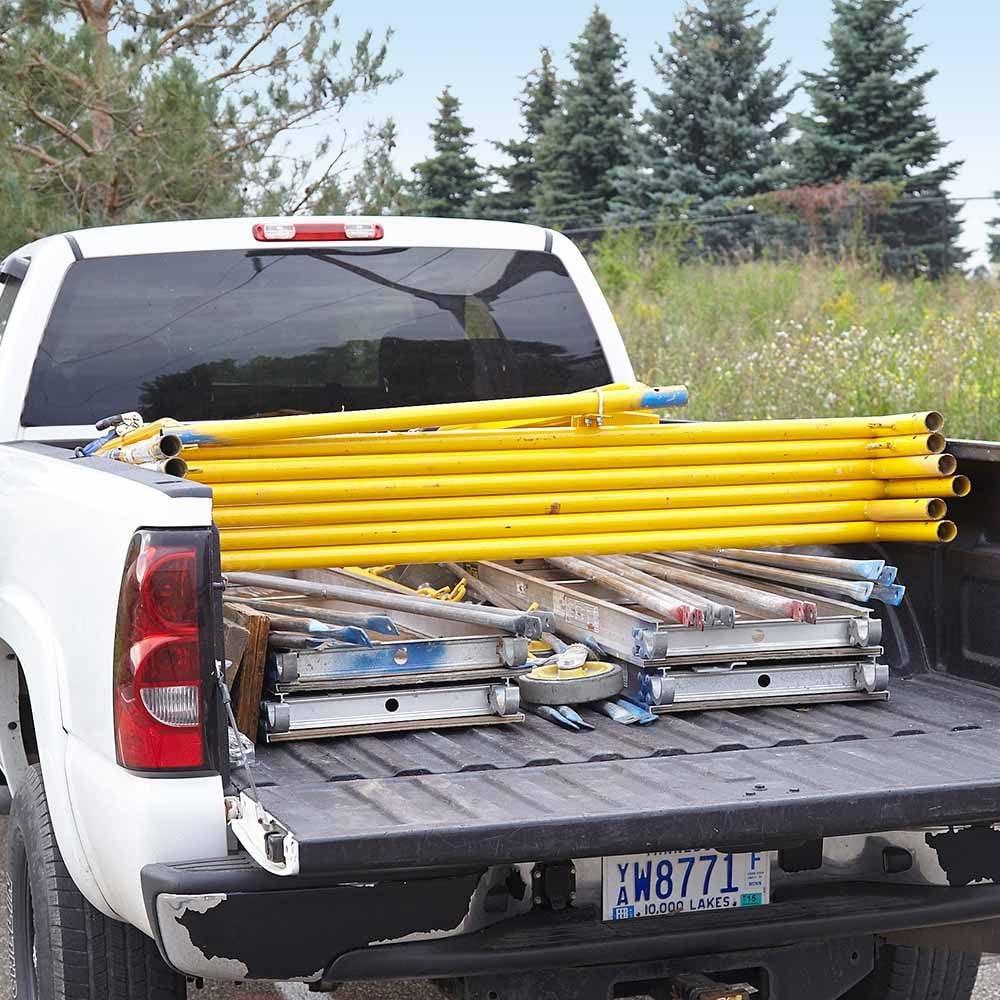
Haul Scaffolding Safely
Stack up the planks, braces and bases on the bottom between the wheel wells, and stack the frames on top. Avoid propping the scaffolding frames up on the side of the bed. It’s best to have everything as low as possible so parts don’t get blown or bounced out. And frames that stick out past the side of the bed can be a conk hazard for someone walking by the truck. If you have a shorter bed, you may have to keep the tailgate open; just make sure to secure it all with a tie-down strap.
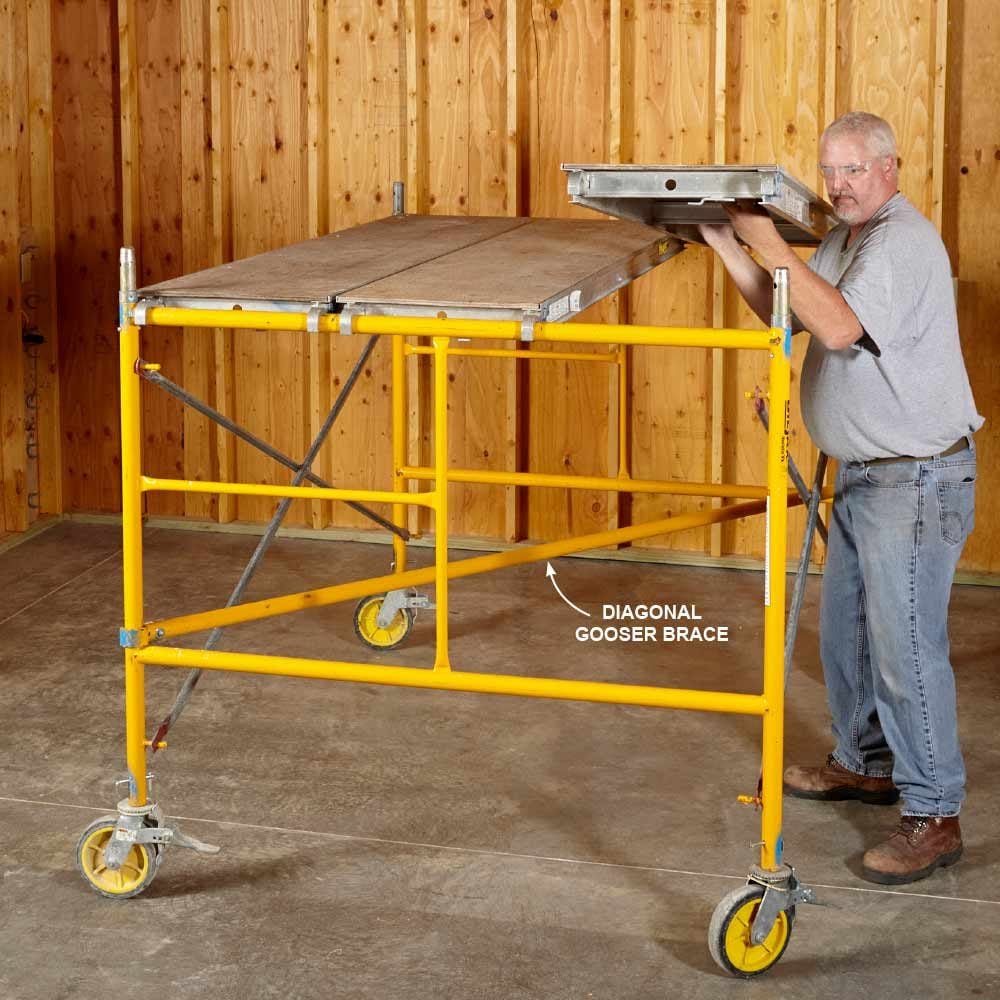
Plank the Whole Bay
Whenever possible, cover the whole width of the scaffold with planks. This creates a larger work area and reduces the risk of a fall. When it isn’t possible, especially when you’re working midway up ladder frames like these, install another plank higher up to create a sort of guardrail. When you work on casters, install a diagonal “gooser” brace. It will keep the scaffold square and stable.
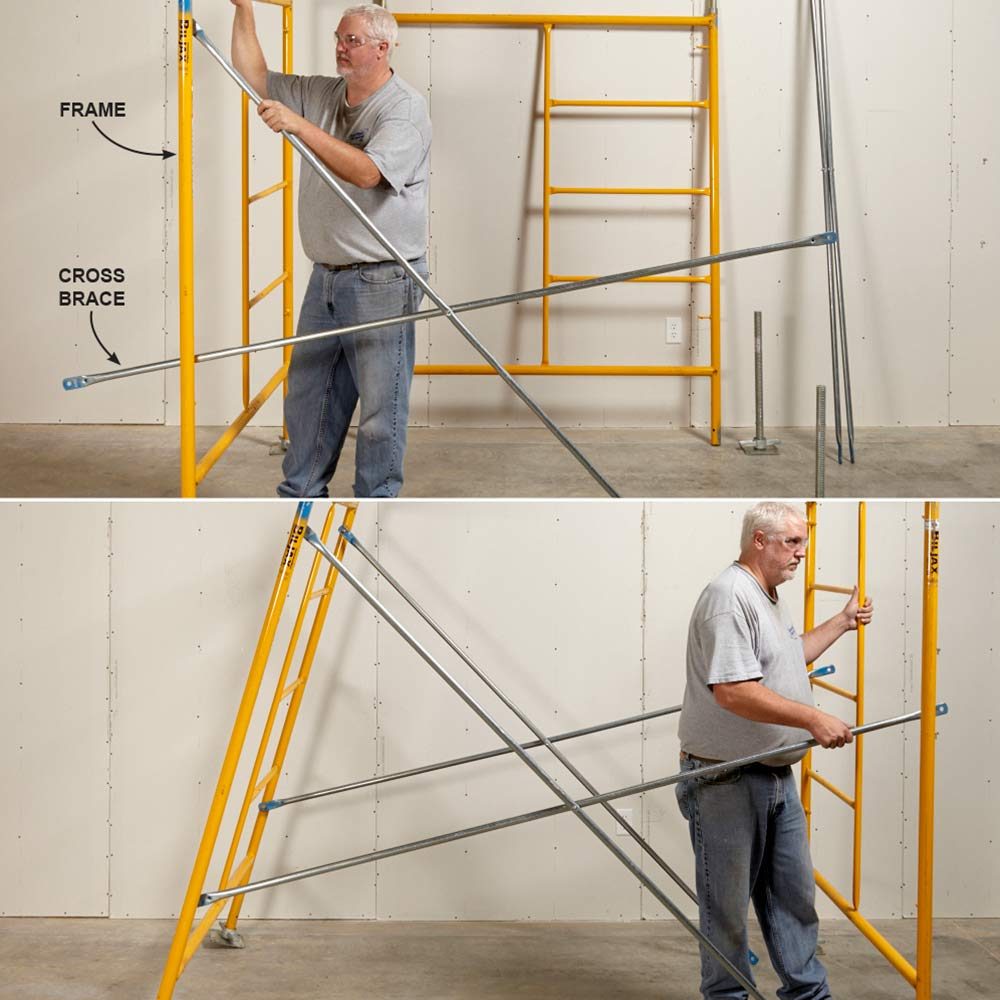
How to Set Up Scaffolding Safely
Install the base jacks or casters first so you don’t have to lift the entire scaffold to slide them in. Install both cross braces on one frame. It will stay upright with the support of the cross braces (top). Move the second frame into position and attach the cross braces to that (bottom). Slide the scaffold about 14 in. from the wall before installing the planks.
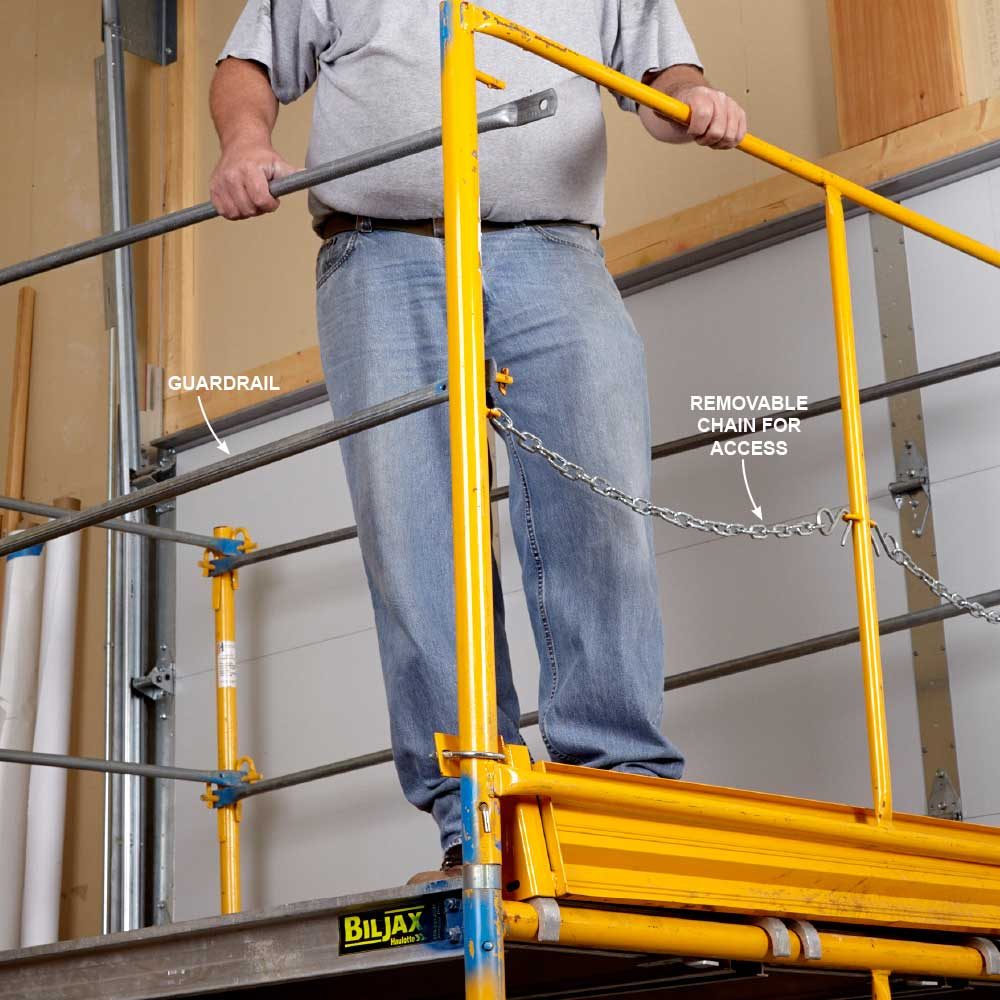
Install a Guardrail
Installing a guardrail is the best way to prevent accidentally stepping off the edge of the platform. Safety harnesses aren’t necessary when you’re working on this type of scaffold. In fact, if you fall while wearing a safety harness, you could pull the whole platform down with you, endangering everyone working in the area.
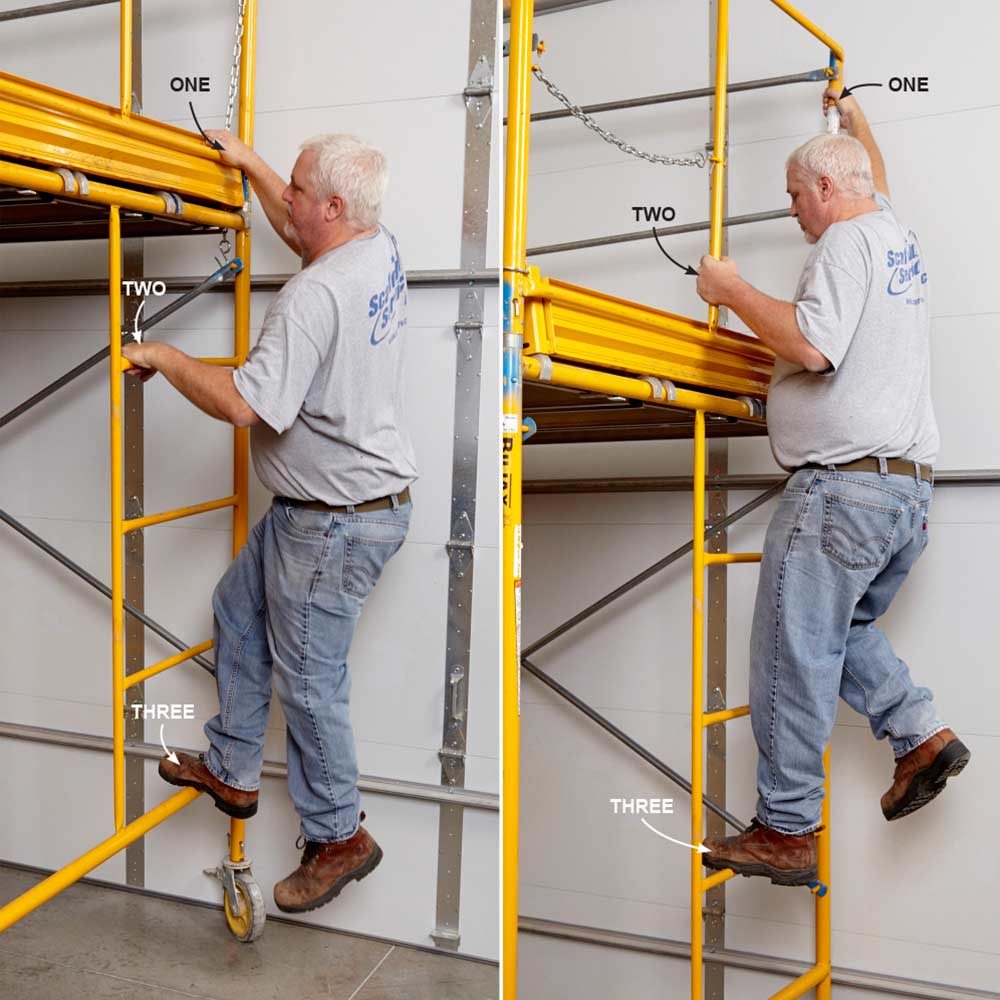
Maintain a Three-Point Grip
When you’re climbing a scaffold, always maintain a three-point grip. That means that one hand and two feet, or one foot and two hands, should stay in contact with the scaffold at all times. Keep your body as close to the frame as possible. Leaning way out could cause the whole works to tip over right on top of you. And never climb on the cross braces; they’re not designed to handle the weight.
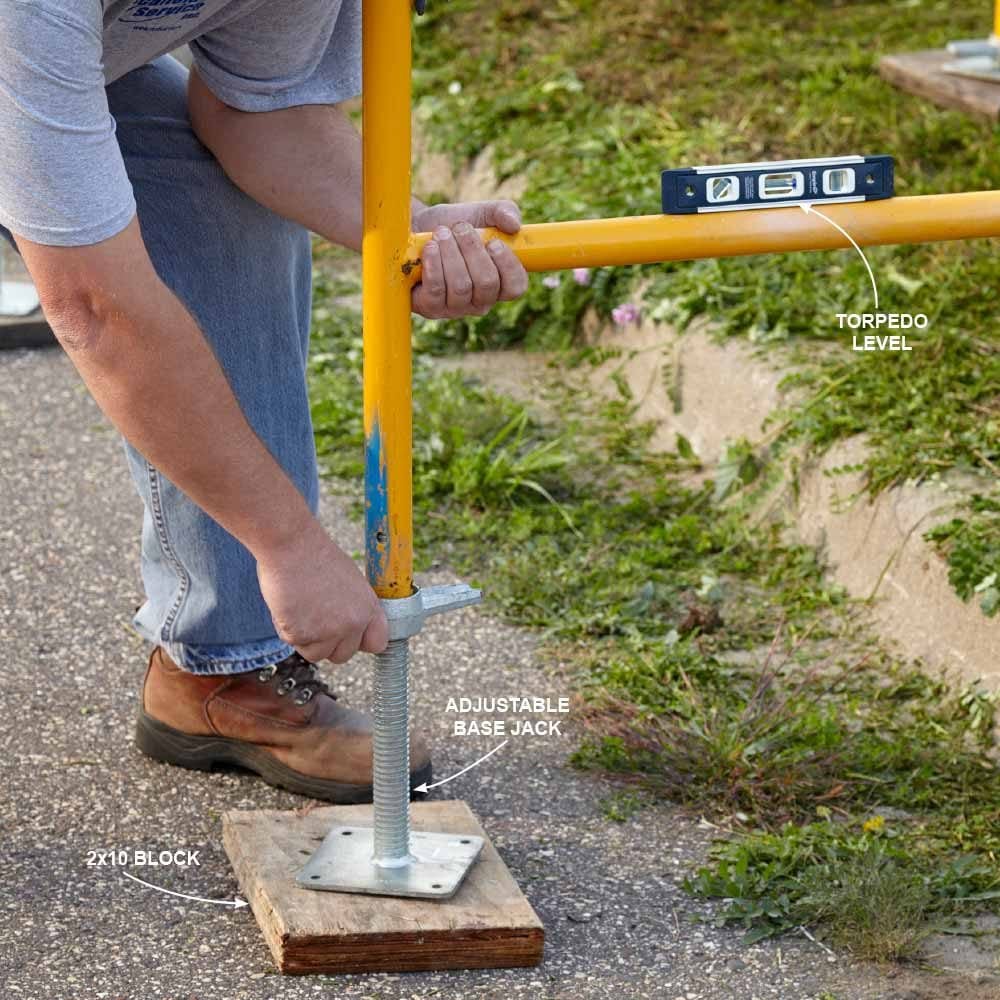
Setting Up Scaffolding on Uneven Ground
Scaffold frames are designed for use with either casters or base plates. If you skip them, the frame tubes can get damaged and structurally weakened. Set a 2×10 block of wood under each leg, even when using a base plate. This will help prevent sinking into soft soils or hot asphalt.
Setting the scaffold on blocks when working on concrete isn’t necessary, but it’s still a good idea. An uneven floor or a slightly cupped base plate could result in a small mating surface. The slight flex in wood ensures a nice, even distribution of weight. When you’re working on an uneven surface, level and plumb the scaffold with an adjustable base jack. Never set the scaffold on masonry or stacks of wood.
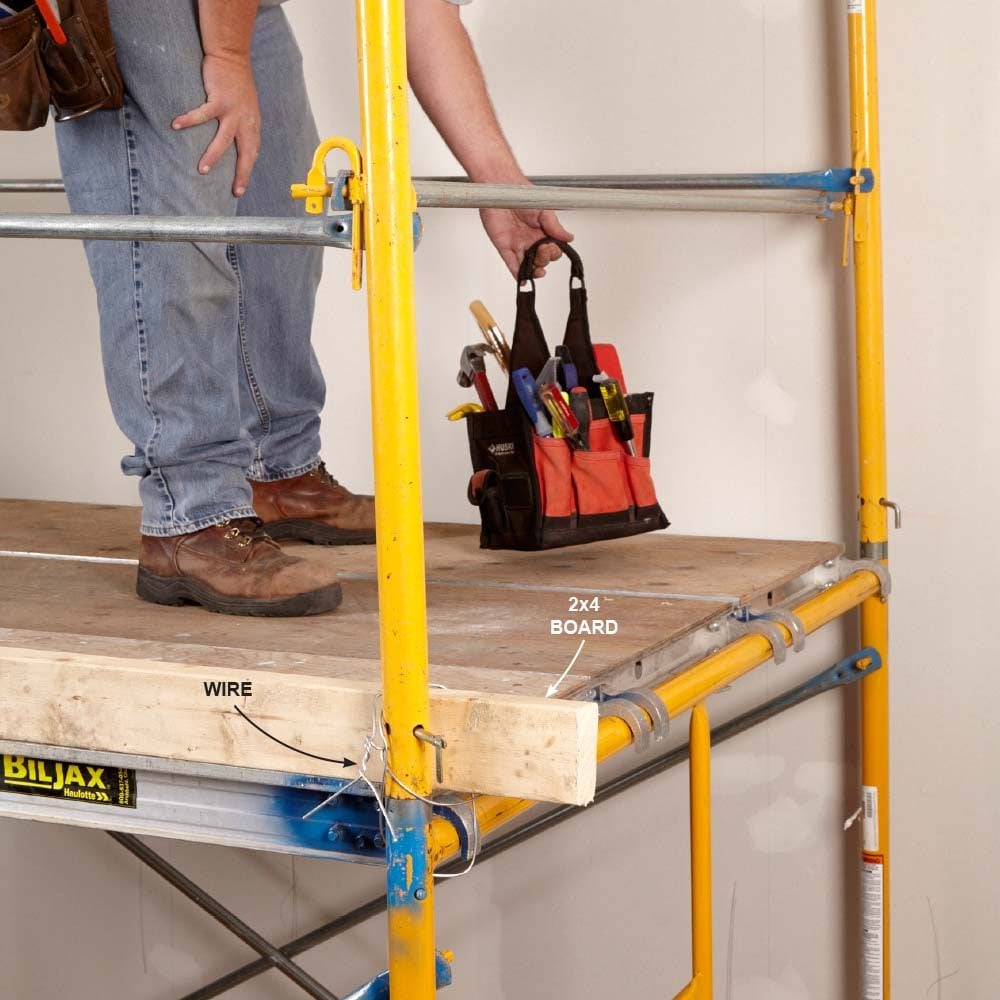
Working on Scaffolding:
Safety first: Keep the planks clear of clutter to reduce the risk of tripping or kicking stuff onto unsuspecting souls working below. Keep your tools and supplies in buckets, caddies and toolboxes whenever possible. Install a 2×4 toe board to prevent items from falling. Hold it in place at the corners with wire. It’s tempting to hang tools from the railings, but don’t do it. Adding weight to the railings increases the odds that they could fail if someone leans against them. Hard hats for ground workers are always a good idea.
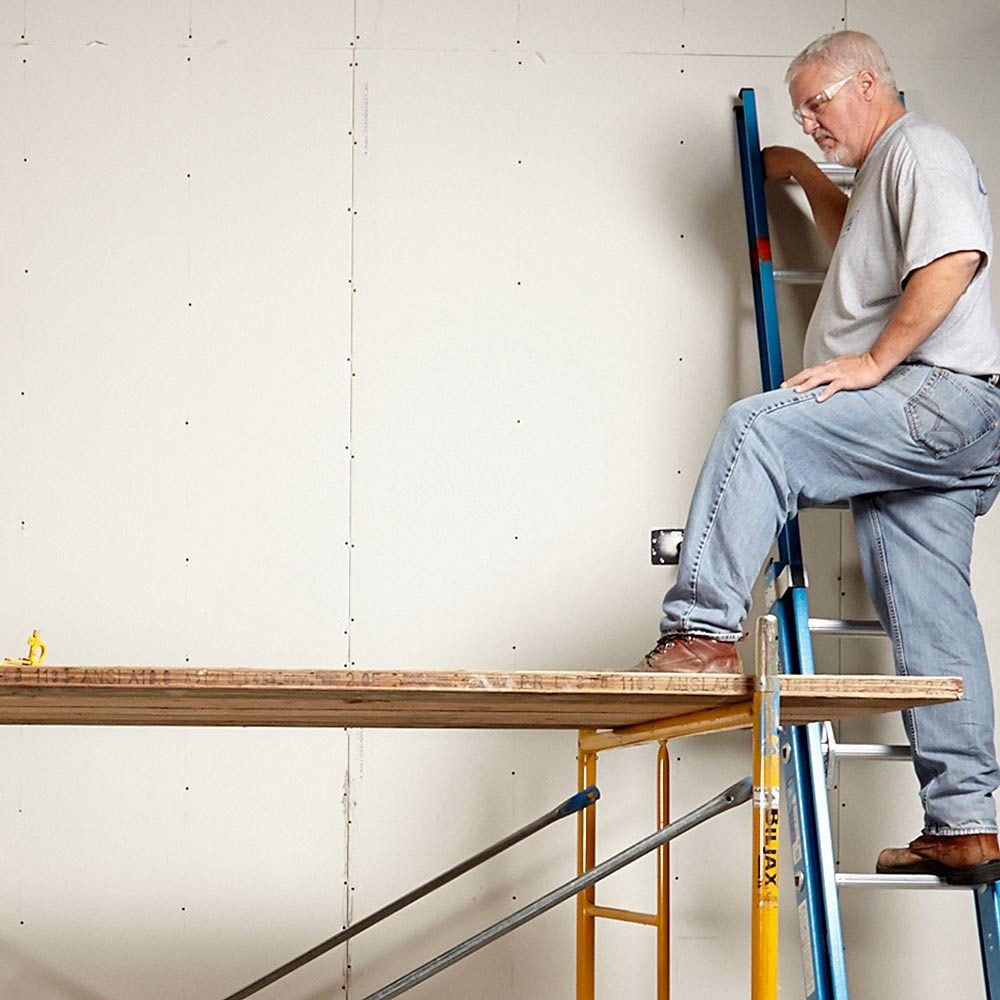
Access the Platform With a Ladder
Use a ladder to safely and easily access a scaffold, especially when you’re working with wood planks hanging over the ends. Run the ladder at least 3 ft. past the surface of the planks. Lean the ladder on the wall rather than the scaffold itself or you could tip it over when climbing up.
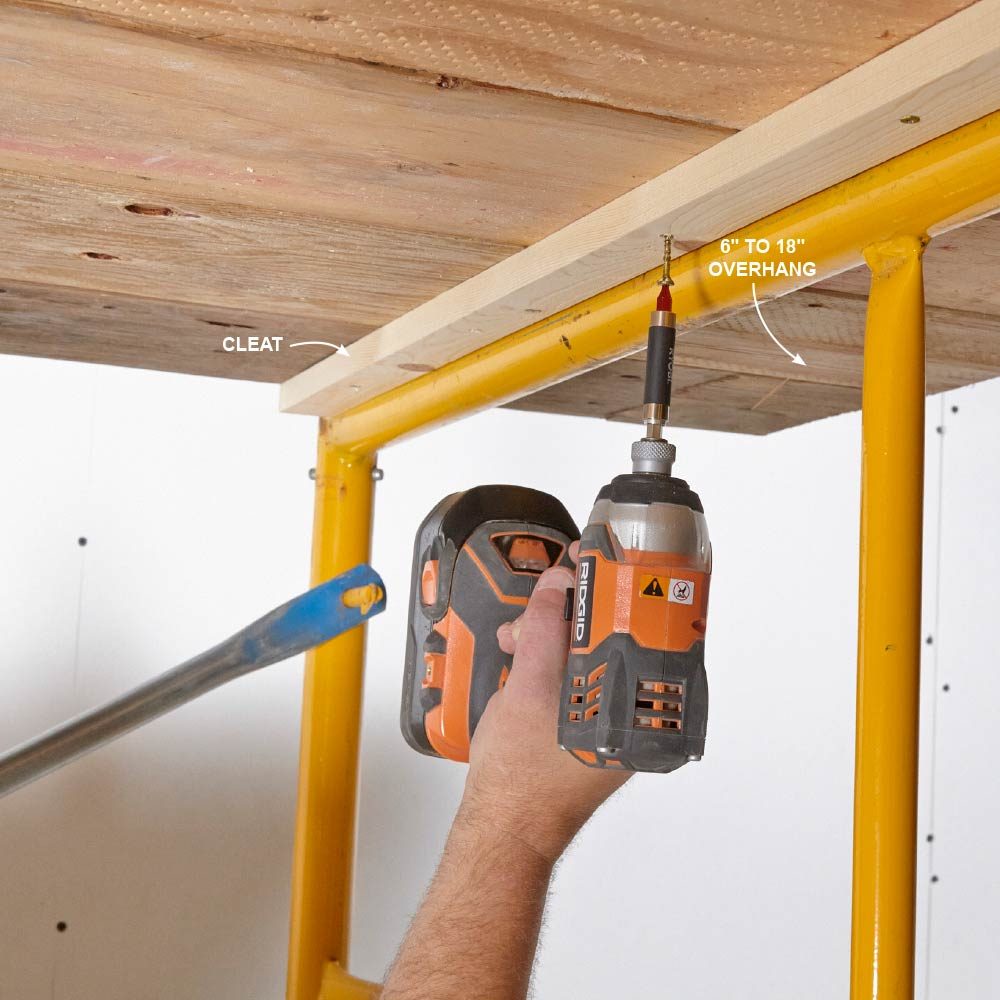
Working with Wood Planks
It’s perfectly acceptable to work on wooden planks, but there are a few things you should know. Use at least 2×10 planks made from a sturdy wood like Douglas fir. Some softer pine boards won’t hold up. Especially avoid boards with large knots.
Laminated veneer lumber (LVL) is ideal. Planks obtained from a rental center should have a stamp on the edge indicating they’re safe to use. Wood planks should hang over the edge of the frame a minimum of 6 in., but don’t have them overhang by more than 18 in. or they could tip if you step too close to the edge. Install a cleat to hold the planks in place.
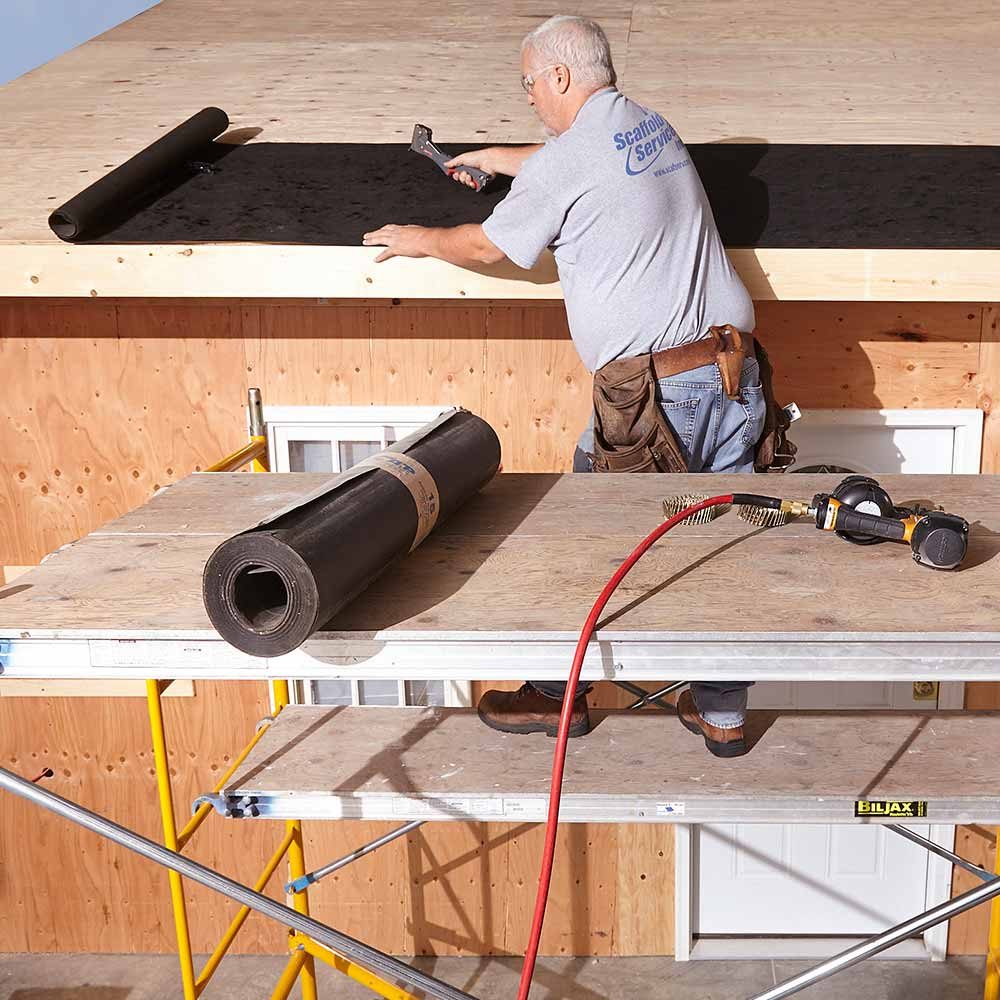
Build a Handy Workbench
One way to organize your workspace is to create a workbench by installing planks at a higher level than the ones being walked on. A workbench adds a level of safety as well because you’ll be less likely to trip on supplies and tools.
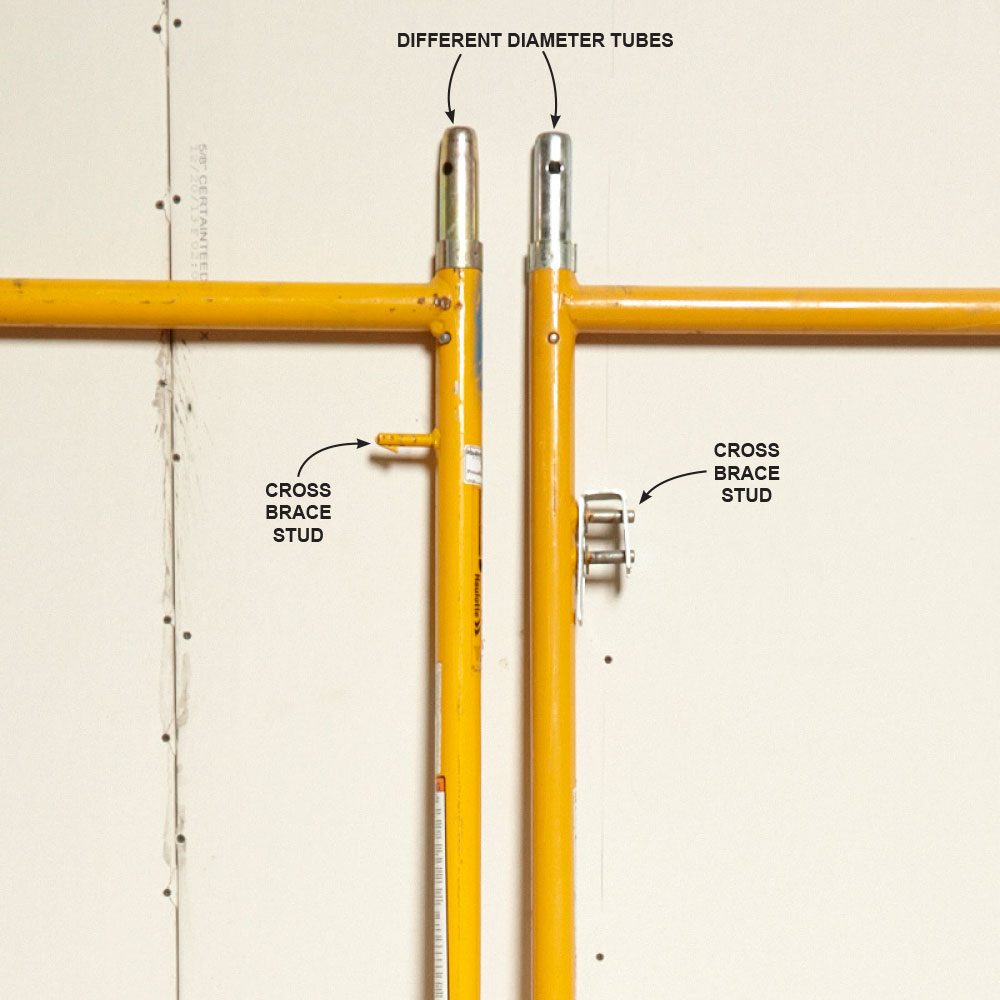
Don’t Mix and Match
Combining scaffold styles can result in an unstable and dangerous platform. Just because most scaffold frames are yellow doesn’t mean they’re the same. There are at least five different styles of scaffold, and many have no identifying marks. The same manufacturer often builds several different styles.
To add to the confusion, the differences in tube diameters and cross brace stud locations can be small enough that the pieces “kind of” fit together. The only way to really be sure is to measure the overall frame dimensions, the inside and outside tube diameters, and the cross brace stud spacing.
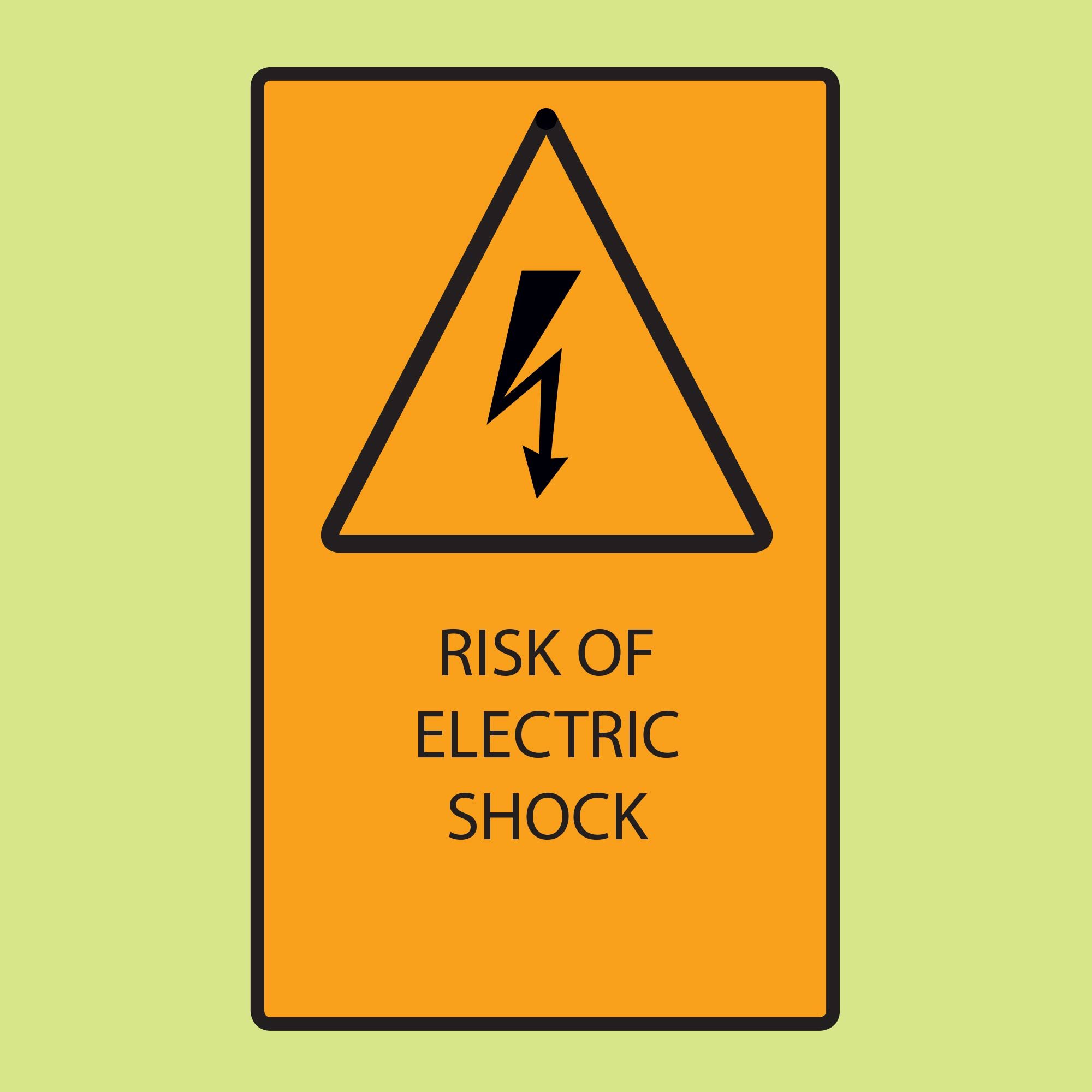
Stay Clear of Power Lines
You don’t have to touch a power line to get electrocuted. Electricity can arc from the line to conductive materials (like scaffolds). Keep a minimum distance of 10 ft. from all power lines.



















